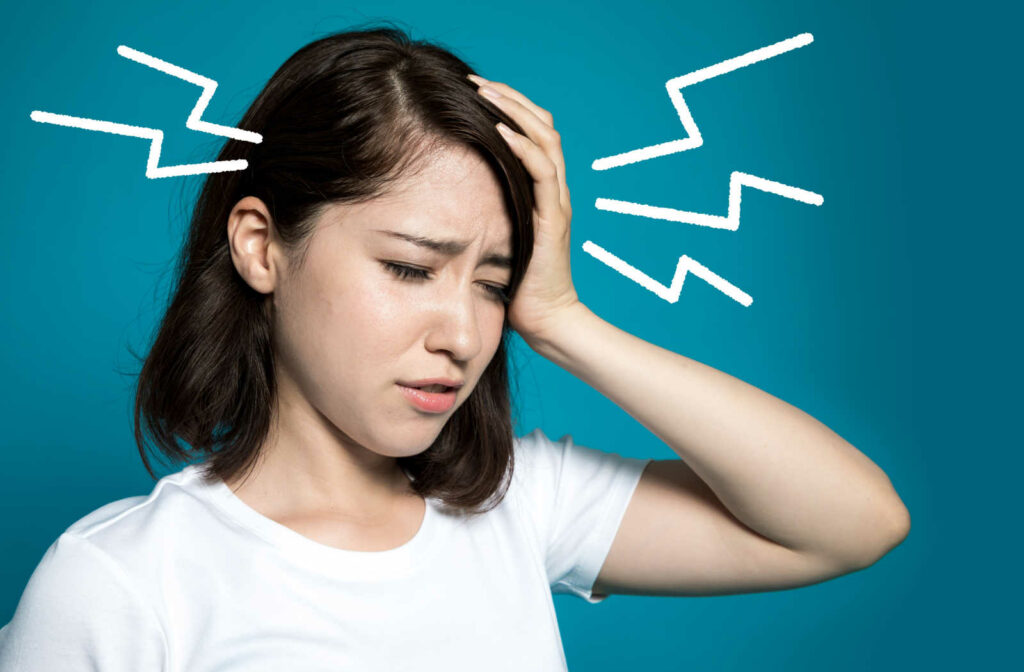Millions of people suffer from dry eyes, either seasonally during allergy flare-ups or persistently throughout the year. While dry eyes rarely cause permanent damage, they can sometimes signal underlying eye conditions. If you experience ongoing symptoms, scheduling an eye exam is essential to rule out potential issues.
Why Dry Eyes Shouldn’t Be Ignored
Even though dry eyes may not seem severe, they can lead to:
- Headaches from prolonged strain or discomfort.
- Blurry vision, making daily tasks challenging.
- Increased susceptibility to eye infections due to inadequate tear production.
- Corneal abrasions caused by insufficient lubrication, leading to irritation.
Simple Remedies for Dry Eyes
For mild cases, these at-home treatments can help manage symptoms:
- Artificial Tears: Lubricating eye drops provide quick and temporary relief.
- Humidifiers: Adding moisture to the air can help prevent dryness.
- Screen Breaks: Reduce strain by following the 20-20-20 rule: every 20 minutes, look at something 20 feet away for 20 seconds.
- Warm Compresses: Gently applying a warm compress can stimulate oil glands to improve tear quality.
When to See an Eye Doctor
Persistent symptoms, signs of infection, or ongoing discomfort should be evaluated by an eye care professional. Advanced treatments, such as prescription eye drops or tear production therapies, may be necessary for effective relief.
What Is Dry Eye?
Dry eye disease is the most common cause of dry eyes, and it’s typically referred to as dry eye. There are two major subtypes of dry eye: evaporative and aqueous deficiency. Each subtype is characterized by its root cause.
Evaporative dry eye is caused by a lack of oil in the tear film. Without this oil, your tears evaporate too quickly. This leaves the eye without adequate lubrication. On the other hand, aqueous deficiency dry eye is an issue with the amount of tears your body produces. The eye simply doesn’t produce enough tears to protect and lubricate the eye properly.
Dry Eyes And Headaches: How Are They Linked
Several years ago, a study revealed a connection between migraine headaches and dry eye. It found that out of nearly 80,000 participants, 20% of them had dry eye disease along with their migraine diagnosis.
Another connection that dry eye and headaches share is some of their symptoms. For example, light sensitivity, discomfort while looking at digital screens, and inflammation are potential symptoms of both dry eye disease and migraines.
Potential Complications of Dry Eye
Untreated dry eye disease can lead to several complications, affecting both comfort and vision quality. Here are the primary risks associated with chronic dry eyes:
1. Blurry Vision
- Tears and Vision: Tears play a crucial role in focusing light on the retina for clear vision. Without a stable tear film, the eyes may struggle to refract light correctly, resulting in blurry or distorted vision.
- Low-Light Challenges: Dry eye symptoms often worsen in low-light settings, making it difficult to focus in dim conditions.
2. Infection and Surface Damage
- Infection Risk: Tears act as a natural defense system, trapping airborne particles and preventing harmful contaminants from reaching the eye’s surface. Insufficient tears increase susceptibility to bacterial or viral infections.
- Corneal Damage: Chronic dryness can lead to abrasion or damage to the cornea, caused by friction between the eyelid and an inadequately lubricated eye surface.
3. Persistent Discomfort
- Irritation Symptoms: Dry eyes are commonly associated with gritty sensations, stinging, or burning, all of which can significantly impact quality of life.
- Eye Rubbing Risks: While rubbing the eyes may provide temporary relief, it can exacerbate irritation and increase the likelihood of scratches or infection.
Dry Eye Treatments
If your dry eyes cause symptoms like headaches or blurry vision, there may be options for relief; treatments may include:
- Medication: Your eye doctor can prescribe you various medications—oral, nasal and topical. Some stimulate tear production, and some help reduce inflammation. If an infection is the underlying cause of the dryness, the optometrist may prescribe antibiotic eye drops.
- Meibomian gland expression: One of the leading causes of evaporative dry eye is meibomian gland dysfunction (MGD), which results in an inadequate amount of oil in the tear film. Sometimes the manual expression of these glands can help unclog them and stimulate their normal function.
- Intense Pulsed Light (IPL) Therapy: Another option that can help with evaporative dry eye from MGD is IPL. The eye doctor applies a particular frequency of intense pulses of light to the area around the eyes. These pulses of light can help stimulate and unclog the meibomian glands.
- Eye drops: Lubricating eye drops are typically the first line of treatment in most cases of dry eye. For chronic cases of dry eye, ensure you use a preservative-free eye drop. If standard lubricating eye drops aren’t providing relief, serum tears may be an option. These eye drops are typically more effective because they’re made from your blood, and contain specific biological nutrients and immunoprotective proteins.
- Specialty contact lenses: Contact lenses are usually not an option for someone who has dry eyes. However, there are some specialty contact lenses, like scleral lenses, that someone with dry eye may be able to wear.
- Zest Treatment: Zocular Eyelid System Treatment is an innovative and non-surgical method of treating eye conditions like dry eye, clogged meibomian glands and blepharitis. This technology uses Zocusome micelle which employs a natural, plant-based formulation to cleanse the eyelid margin gently and unclog oil glands.
Managing Dry Eye
Over-the-counter eye drops can provide short-term relief from dry eye symptoms. But if you’re looking to get to the root cause of your dry eye and get long-lasting relief, we’re here to help.
Reach out to our office—the professional team at Bluebird Vision + Wellness is here to answer your questions. We can’t wait to see you!




